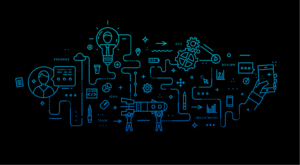
Applications are moving targets. They are everywhere, and they are always changing. This makes them hard to secure. If done right, application security should bridge the gap between teams responsible for building and managing applications. Secure applications require agility and insight into the behavior of applications, their network, workloads, and finally the users and devices who interact with them.
What is the process of application security?
Application security refers to the protection of an application throughout its entire lifecycle. These three states are crucial for applications to be secured.
- Secure applications built on secure workloads.
- Application security during runtime. This includes access to applications by users and devices.
- Adaptive security for applications that change or get updated.
What is the difference between security and applications?
Security must be dynamic to keep up with the ever-changing applications. Security must be available in all environments, including hybrid and public clouds. It must also seamlessly integrate with the application environments (workloads), and tools that DevOps teams utilize to empower application owners to ensure that they don’t become a bottleneck.
These components are essential for providing security for applications.
- Security close to the application.
- Application changes can cause security to change, but they will not affect your security.
- A security that adapts to the application dependencies.
Solutions to secure your applications
Application workload protection
Workload protection is a firewall that protects your application workloads. Your application workload will be protected by micro-segmentation and allow list methods. Your workloads will be protected from any malicious activity, whether it is in the cloud, hybrid, or on-premises environment. By reducing your application attack surface, you help secure your greatest assets.
Apps using cloud analytics
Cloud analytics offers security alerts and management capabilities. It also extends visibility into threats across all your networks, including hybrid and public clouds. It is crucial to respond quickly in order to avoid security breaches becoming catastrophic. Cloud analytics provides the data IT teams need in order to make security decisions that will strengthen your security position.
Multi-factor authentication
This type of application security uses two types of authentication to grant access: the traditional username and password and the assurance that the device associated with the requester is trusted. This zero-trust method adds an extra layer of security to ensure that threats are blocked and your users have secure network access.
Monitoring the performance of applications
Performance monitoring can detect problems before customers notice them, which protects your reputation and allows you to create a proactive solution. This security strategy uses machine learning to create a baseline and automate anomaly detection. IT teams can then secure their applications. With real-time performance information, you can lower the chance of a security breach.
